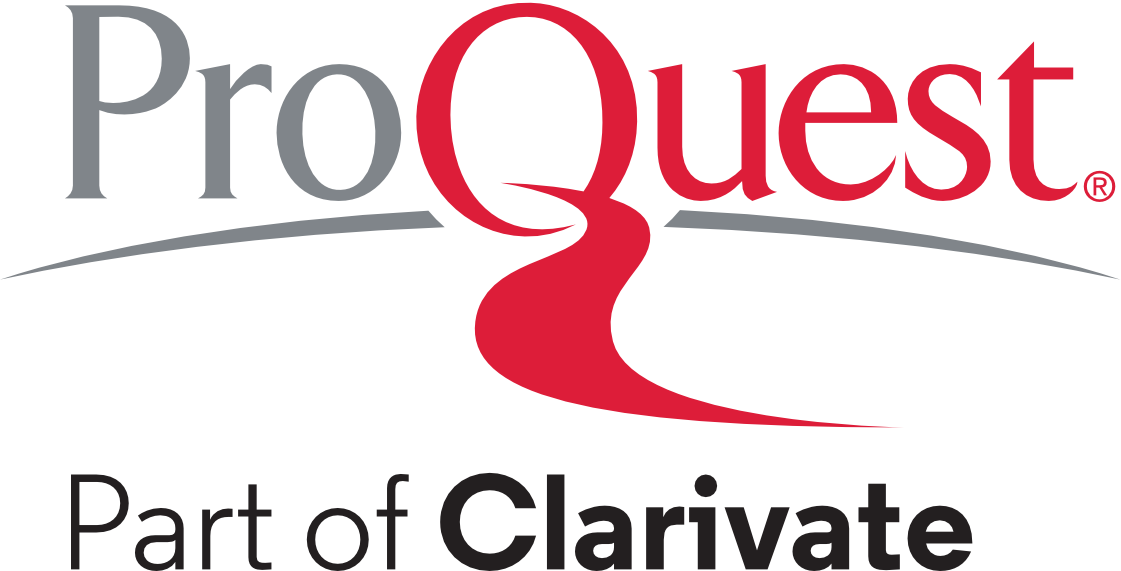Impact of Attention Deficit Hyperactivity Disorder on Entrepreneurial Behavior: A Neurobiological Approach
Keywords:
TDAH, emprendimiento, toma de decisiones, asunción de riesgos, creatividad, Juego de azar de Iowa, enfoque neurobiológico, cerebro, factores genéticos, factores ambientalesAbstract
The objective of this study is to determine the relationship between attention deficit hyperactivity disorder (ADHD) and entrepreneurial behavior, specially in characteristics such as risk-taking, creativity, and decision-making. Three groups of ten individuals (5 women; age 36.3 ± 14.0) were selected using social media platforms: one group with ADHD (four participants), one group of entrepreneurs (three participants), and one control group without ADHD or entrepreneurial experience (three participants). 10-question interviews, tailored to their respective profiles, were conducted individually via Zoom. After interviews transcriptions, significant statements were extracted for data analysis. Participants were also instructed to play the Iowa Gambling Task (IGT) from an online platform to assess decision-making and risk-taking. Individual data were compiled, compared and statistically processed with Microsoft Excel. As results, comparing interview statements between individuals with ADHD, entrepreneurs, and the control group, in terms of risk-taking, attention, and creativity showed that individuals with ADHD can bring unique traits and skills to entrepreneurship, while entrepreneurs have specific strategies for managing distractions and maintaining focus. The control group emphasizes organization and analysis rather than creativity. The findings from the IGT suggested that people with ADHD may exhibit impulsive tendencies and difficulty evaluating the long-term consequences of their actions. Entrepreneurs were willing to take calculated risks to seize opportunities and achieve their goals, and they were also aware of the need to limit risk and make prudent decisions to protect their investments. The control group highlighted the individual differences in risk-taking in randomly selected individuals, without any special condition. They showed a certain caution in opting for low-risk choices. In conclusion, the study underscores the importance of considering individual and contextual factors in decision-making processes, incorporating neurobiological aspects of ADHD. Although available data did not directly examine the influence of these factors on entrepreneurship success, it highlights the significance of understanding the complex influences involved in decision-making.
Downloads
References
APA. (2013). Diagnostic and Statistical Manual of Mental Disorders: DSM-5TM, 5 Ed. APA.
https://doi.org/10.1176/appi.books.9780890425596
Antoncic, J. A.; Antoncic, B.; Gantar, M.; Hisrich, R. D.; Marks, L. J.; Bachkirov, A. A.; Li, Z.; Polzin, P.; Borges, J. L.; Coelho, A. & Kakkonen, M.-L. (2018). Risk-Taking Propensity and Entrepreneurship: The Role of Power Distance. Journal of Enterprising Culture, 26(01), 1–26.
https://doi.org/10.1142/S0218495818500012
Arnsten, A. F. (2009). The Emerging Neurobiology of Attention Deficit Hyperactivity Disorder: The Key Role of the Prefrontal Association Cortex. The Journal of Pediatrics, 154(5), 1–20.
https://doi.org/10.1016/j.jpeds.2009.01.018
Bacanli, A.; Unsel-Bolat, G.; Suren, S.; Yazici, K. U.; Calli, C.; Aygunes Jafari, D.; Kosova, B.; Rohde, L. A. & Ercan, E. S. (2021). Effects of the dopamine transporter gene on neuroimaging findings in different attention deficit hyperactivity disorder presentations. Brain Imaging and Behavior, 15(2), 1103–1114.
https://doi.org/10.1007/s11682-020-00437-w
Bange, F. (2011). Le devenir du trouble déficit de l'attention/hyperactivité chez l'adulte [Attention deficit hyperactivity disorder outcome in adults]. Archives de Pediatrie, 18(7), 831–834.
https://doi.org/10.1016/j.arcped.2011.03.022
Baron, R. B. (2008). The Role of Affect in the Entrepreneurial Process. JSTOR. The Academy of Management Review, 33(2), 328–340.
https://www.jstor.org/stable/20159400
Barringer, B. & Ireland, D. (2020). Entrepreneurship: Successfully Launching New Ventures, 6 ed. Pearson.
Bechara, A.; Damasio, A. R.; Damasio, H. & Anderson, S. W. (1994). Insensitivity to future consequences following damage to human prefrontal cortex. Cognition, 50(1-3), 7–15.
https://doi.org/10.1016/0010-0277(94)90018-3
Bechara, A.; Damasio, H.; Tranel, D. & Damasio, A. R. (2005). The Iowa Gambling Task and the somatic marker hypothesis: some questions and answers. Trends inn Cognitive Sciences, 9(4), 159–162.
https://doi.org/10.1016/j.tics.2005.02.002
Boot, N.; Nevicka, B. & Baas, M. (2020). Creativity in ADHD: Goal-Directed Motivation and Domain Specificity. Journal of Attention Disorders, 24(13), 1857–1866.
https://doi.org/10.1177/1087054717727352
Bull, P.; Tippett, L. & Addis, D. (2015). Decision making in healthy participants on the Iowa Gambling Task: new insights from an operant approach. Frontiers in Psychology, 6, 1–17.
https://www.frontiersin.org/articles/10.3389/fpsyg.2015.00391/full
Cardon, M. S.; Wincent, J.; Singh, J. & Drnovsek, M. (2009). The nature and Experience of entrepreneurial passion. Academy of Management Review, 34(3), 511–532.
https://doi.org/10.5465/amr.2009.40633190
Curtin, K.; Fleckenstein, A. E.; Keeshin, B. R.; Yurgelun-Todd, D. A.; Renshaw, P. F.; Smith, K. R. & Hanson, G. R. (2018). Increased risk of diseases of the basal ganglia and cerebellum in patients with a history of attention-deficit/hyperactivity disorder. Neuropsychopharmacology, 43(13), 2548–2555.
https://doi.org/10.1038/s41386-018-0207-5
Danielson, M. L.; Bitsko, R. H.; Ghandour, R. M.; Holbrook, J. R.; Kogan, M. D. & Blumberg, S. J. (2018). Prevalence of Parent-Reported ADHD Diagnosis and Associated Treatment Among U.S. Children and Adolescents, 2016. Journal of Clinical Child & Adolescent Psychology, 47(2), 199–212.
https://doi.org/10.1080/15374416.2017.1417860
Davis, B. (2010). Creativity & Innovation in Business 2010 Teaching the Application of Design Thinking to Business. Procedia - Social and Behavioral Sciences, 2(4), 6532–6538.
https://doi.org/10.1016/j.sbspro.2010.04.062
Drucker, P. F. (2006). Innovation and Entrepreneurship. Harper Collins.
Elmaghraby, R. & Garayalde, S. (2022). What is ADHD. American Psychiatric Association.
https://www.psychiatry.org/patients-families/adhd/what-is-adhd
Emond, V.; Joval, C. & Poissant, H. (2009). Structural and functional neuroanatomy of attention-deficit hyperactiviy disorder (ADHD). L'Encéphale, 35(2), 107–114.
https://doi.org/10.1016/j.encep.2008.01.005
Eubig, P. A.; Aguiar, A. & Schantz, S. L. (2010). Lead and PCBs as Risk Factors for Attention Deficit/Hyperactivity Disorder. Environmental Health Perspectives, 118(12), 1654–1667.
https://doi.org/10.1289/ehp.0901852
Faraone, S. (2017). Eight Pictures Describe Brain Mechanisms in ADHD. APSARD.
https://apsard.org/eight-pictures-describe-brain-mechanisms-in-adhd/
Faraone, S.; Asherson, P., Banaschewski, T.; Biederman, J.; Buitelaar, J. K.; Ramos-Quiroga, J. A.; Rohde, L. A.; Sonuga-Barke, E. J. S.; Tannock, R. & Franke, B. (2015). Attention-deficit/hyperactivity disorder. Nature Reviews Disease Primers, 16, 15–32.
https://doi.org/10.1038/nrdp.2015.20
Faraone, S. & Larsson, H. (2019). Genetics of attention deficit hyperactivity disorder. Molecular Psychiatry, 24, 562–575.
https://doi.org/10.1038/s41380-018-0070-0
Fernández-Jaén, A.; López-Martín, S.; Albert, J.; Fernández-Mayoralas, D. M.; Fernández-Perrone, A. L.; Jiménez, M.; Calleja-Pérez, B.; Recio, M.; López-Arribas, S. & Muñoz-Jareño, N. (2015). Cortical thickness differences in the prefrontal cortex in children and adolescents with ADHD in relation to dopamine transporter (DAT1) genotype. Psychiatry Research: Neuroimaging, 233(3), 409–417.
https://doi.org/10.1016/j.pscychresns.2015.07.005
Forquesato, P. (2016). Social norms of work ethic and incentives in organizations. Journal of Economic Behavior & Organization, 128, 231–250.
https://doi.org/10.1016/j.jebo.2016.05.012
Gilman, L. (2021). How to Succeed in Business with ADHD. Additude Magazine.
https://www.additudemag.com/adhd-entrepreneur-stories-jetblue-kinkos-jupitermedia/
Hoogman, M.; Bralten, J.; Hibar, D. P. Mennes, M.; Zwiers, M. P.; Schweren, L. S. J.; van Hulzen, K. J. E.; Medland, S. E.; Shumskaya, E.; Jahanshad, N.; de Zeeuw, P.; Szekely, E.; Sudre, G.; Wolfers, T.; Onnink, A. M. H.; Dammers , J. T.; Mostert, J. C.; Vives-Gilabert, Y.; Kohls, G.; Oberwelland, E.; Seitz, J.; Schulte-Rüther, M.; Ambrosino, S.; Doyle, A. E.; Høvik, M. F.; Dramsdahl, M.; Tamm, L.; van Erp, T. G. M.; Dale, A.; Schork, A.; Conzelmann, A.; Zierhut, K.; Baur, R.; McCarthy, H.; Yoncheva, Y. N.; Cubillo, A.; Chantiluke, K.; Mehta, M. A.; Paloyelis, Y.; Hohmann , S.; Baumeister, S.; Bramati, I.; Mattos, P.; Tovar-Moll, F.; Douglas, P.; Banaschewski, T.; Brandeis, D.; Kuntsi , J.; Asherson, P.; Rubia, K.; Kelly, C.; Di Martino, A.; Milham, M. P.; Castellanos, F. X.; Frodl, T.; Zentis, M.; Lesch, K.-P.; Reif, A.; Pauli, P.; Jernigan, T. L.; Haavik, J.; Plessen, K. J.; Lundervold, A. J.; Hugdahl, K.; Seidman, L. J.; Biederman, J.; Rommelse, N.; Heslenfeld, D. J.; Hartman, C. A.; Hoekstra, P. J.; Oosterlaan, J.; von Polier, G.; Konrad, K.; Vilarroya, O.; Ramos-Quiroga, J. A.; Soliva, J. C.; Durston, S.; Buitelaar, J. K; Faraone, S. V.; Shaw, P.; Thompson, P. M. & Franke, B. (2017). Subcortical brain volume differences in participants with attention deficit hyperactivity disorder in children and adults: a cross-sectional mega-analysis. The Lancet Psychiatry, 4(4), 310–319.
https://doi.org/10.1016/s2215-0366(17)30049-4
Hultman, C.; Tjernström, N.; Vadlin, S.; Rehn, M.; Nilsson, K. W.; Roman, E. & Åslund, C. (2022). Exploring decision-making strategies in the Iowa gambling task and rat gambling task. Frontiers in Behavioral Neuroscience, 16, 1–18.
https://doi.org/10.3389/fnbeh.2022.964348
Khalid, S. & Sekiguchi, T. (2018). The role of empathy in entrepreneurial opportunity recognition: An experimental study in Japan and Pakistan. Journal of Business Venturing Insights, 9, 1–9.
https://doi.org/10.1016/j.jbvi.2017.11.001
Korber, S. & McNaughton, R. B. (2018), Resilience and entrepreneurship: a systematic literature review, International Journal of Entrepreneurial Behavior & Research, 24(7), 1129–1154.
https://doi.org/10.1108/IJEBR-10-2016-0356
Lazear, E. P. (2005). Entrepreneurship. Journal of Labor Economics, 23(4), 649–680.
https://doi.org/10.1086/491605
Lerner, D.; Verheul, I. & Thurik, R. (2019). Entrepreneurship and attention deficit/hyperactivity disorder: a large-scale study involving the clinical condition of ADHD. Small Business Economics, 53(2), 381–392.
https://doi.org/10.1007/s11187-018-0061-1
Lichtenstein, P.; Carlström, E.; Råstam, M.; Gillberg, C. & Anckarsäter, H. (2010). The Genetics of Autism Spectrum Disorders and Related Neuropsychiatric Disorders in Childhood. American Journal of Psychiatry, 167(11), 1357–1363.
https://doi.org/10.1176/appi.ajp.2010.10020223
NIH. (2007, November 12). Brain Matures a Few Years Late in ADHD, But Follows Normal Pattern. National Institutes of Health.
Shaw, M.; Hodgkins, P.; Caci, H.; Young, S.; Kahle, J.; Woods, A. G. & Arnold, L. E. (2012). A systematic review and analysis of long-term outcomes in attention deficit hyperactivity disorder: effects of treatment and non-treatment. BMC Medicine, 10, 1–15.
https://doi.org/10.1186/1741-7015-10-99
Shaw P.; Eckstrand, K.; Sharp, W.; Blumenthal, J.; Lerch, J. P.; Greenstein, D.; Clasen, L.; Evans, A.; Giedd, J. & Rapoport, J. L. (2007). Attention-deficit/hyperactivity disorder is characterized by a delay in cortical maturation. Proceedings of the National Academy of Sciences, 104(49), 19649–19654.
https://doi.org/10.1073/pnas.0707741104
Seidman, L. J.; Valera, E. M. & Makris, N. (2005). Structural brain imaging of attention-deficit/hyperactivity disorder. Biological Psychiatry, 57(11), 1263–1272.
https://doi.org/10.1016/j.biopsych.2004.11.019
Sônego, M.; Meller, M.; Massuti, R.; Campani, F.; Amaro, J.; Barbosa, C. & Rohde, L. A. (2021). Exploring the association between attention-deficit/hyperactivity disorder and entrepreneurship. Brazilian Journal of Psychiatry, 43(2), 174–180.
https://doi.org/10.1590/1516-4446-2020-0898
Sprich, S.; Biederman, J.; Crawford, M. M.; Mundy, E. & Faraone, S. V. (2000). Adoptive and Biological Families of Children and Adolescents With ADHD. Journal of the American Academy of Child and Adolescent Psychiatry, 39(11), 1432–1437.
https://doi.org/10.1097/00004583-200011000-00018
Thapar, A.; Holmes, J.; Poulton, K. & Harrington, R. (1999). Genetic basis of attention deficit and hyperactivity. British Journal of Psychiatry, 174(2), 105–111.
https://doi.org/10.1192/bjp.174.2.105
Verheul, I.; Block, J.; Burmeister-Lamp, Thurik, K. R.; Tiemeier, H. & Turturea, R. (2015). ADHD-like behavior and entrepreneurial intentions. Small Business Economics, 45, 85–101.
https://doi.org/10.1007/s11187-015-9642-4
Villanueva, E. & Martins, I. (2022). Overconfidence, fear of failure, risk-taking and entrepreneurial intention: The behavior of undergraduate students. Tec Empresarial, 16(3), 16–33.
https://dx.doi.org/10.18845/te.v16i3.6355
Yeh, C.-W.; Hung, S.-H. & Chang, C. Y. (2022). The influence of natural environments on creativity. Frontiers in Psychiatry, 13, 1–13.
https://doi.org/10.3389/fpsyt.2022.895213
Zacharakis, A. & Shepherd, D. A. (2001). The nature of information and overconfidence on venture capitalists’ decision making. Journal of Business Venturing, 16(4), 311–332.
Published
How to Cite
Issue
Section
License
Copyright (c) 2023 Journal of Applied Cognitive Neuroscience

This work is licensed under a Creative Commons Attribution-NonCommercial-NoDerivatives 4.0 International License.
You are free to:
- Share — copy and redistribute the material in any medium or format.
- The licensor cannot revoke these freedoms as long as you follow the license terms.
Under the following terms:
- Attribution — You must give appropriate credit, provide a link to the license, and indicate if changes were made. You may do so in any reasonable manner, but not in any way that suggests the licensor endorses you or your use.
- NonCommercial — You may not use the material for commercial purposes.
- NoDerivatives — If you remix, transform, or build upon the material, you may not distribute the modified material.
- No additional restrictions — You may not apply legal terms or technological measures that legally restrict others from doing anything the license permits.


 English
English
 Español (España)
Español (España)










